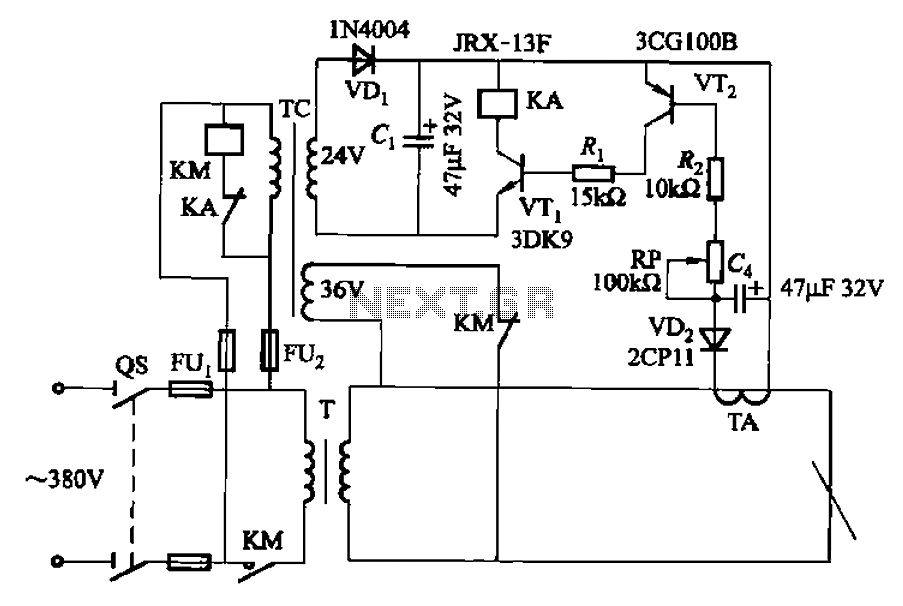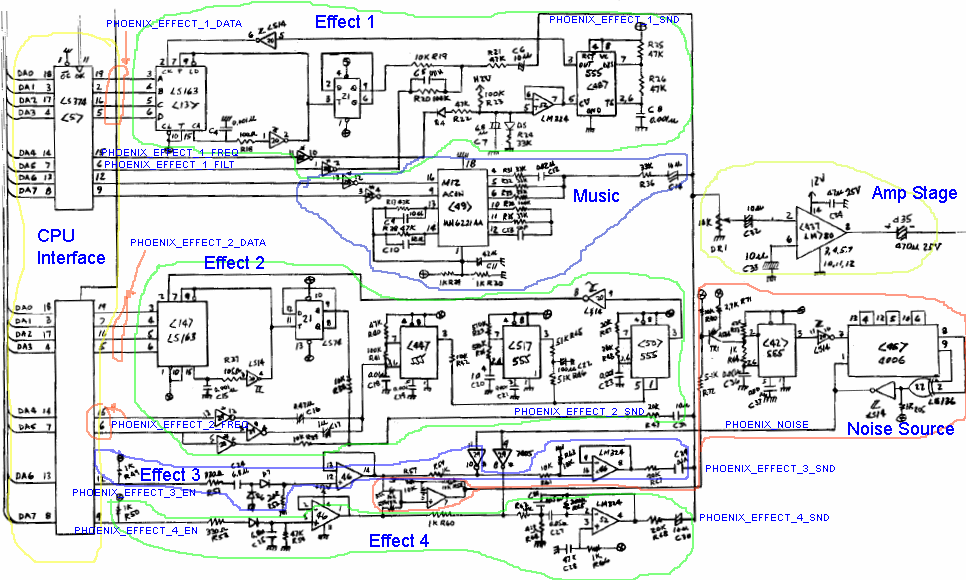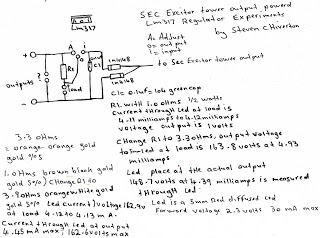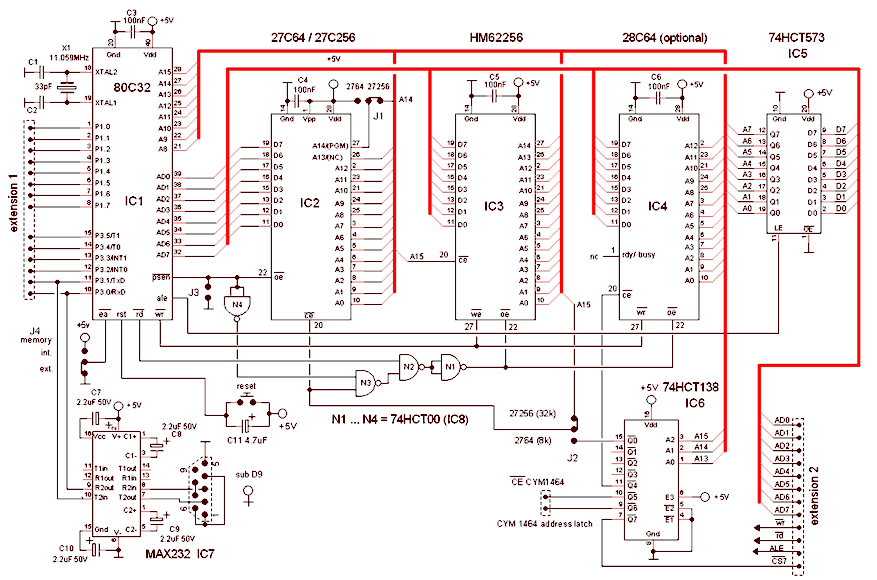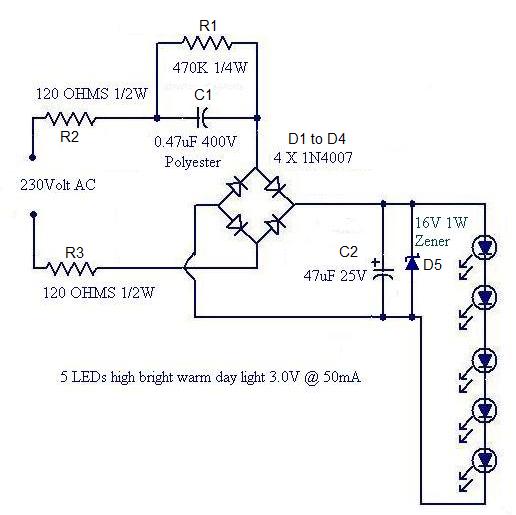
From the same period and vehicle route map
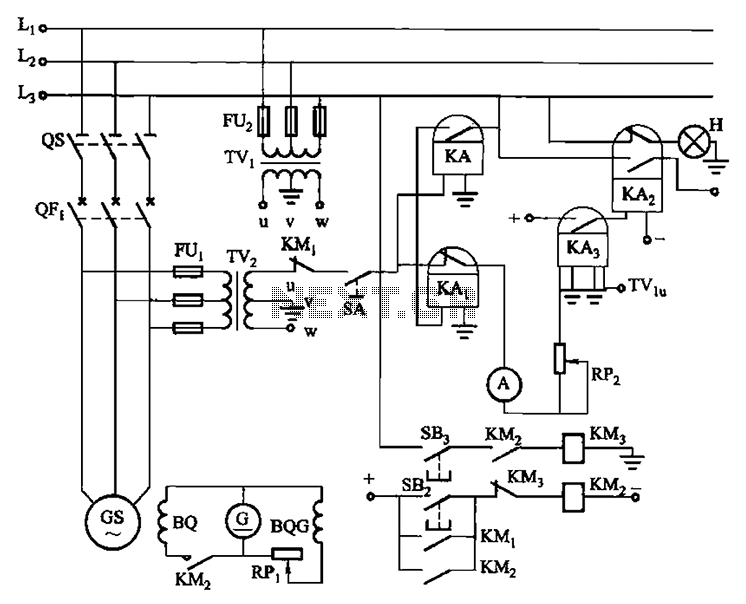
Vehicles from the same period utilize a generator without excitation, which means there is no voltage generator bus, only residual voltage (approximately ten volts). This makes operation relatively simple. It is necessary to wait until the generator speed (frequency) rises to nearly match the operational speed (or frequency) of the generator (or grid). This speed can differ by approximately 2.5%, and it is not required to be exactly equal. At this point, the main switch of the motor can be closed, and the Reed magnetic switch can be activated quickly. This action will enable the generator to rapidly achieve self-synchronization.
The described system involves a generator that operates without an excitation source, relying solely on residual voltage to function. This configuration is typical in certain vehicle applications from the specified period, emphasizing simplicity in operation. The generator's inherent design allows it to generate a small residual voltage, approximately ten volts, which is adequate for initiating the self-synchronization process once the generator speed approaches that of the grid or another generator.
To achieve synchronization, it is crucial to monitor the generator's rotational speed and ensure it is within a 2.5% variance of the desired operational frequency. Upon reaching this threshold, the main motor switch can be engaged, which connects the generator to the load. The subsequent activation of the Reed magnetic switch is a critical step, as it facilitates the transition to self-synchronization. This process involves the generator adjusting its output to match the frequency of the grid or connected load, allowing for seamless integration into the electrical system.
The electrical schematic for this system would typically include the generator, the main motor switch, and the Reed magnetic switch, along with appropriate wiring and control elements to manage the synchronization process. The generator would be depicted with its residual voltage output, and the control circuitry would illustrate how the switches interact to achieve the desired operational state. Proper attention to the specifications of each component is essential to ensure reliable performance and stability during operation.And vehicles from the same period, the generator without excitation, no voltage generator bus, only the residual voltage (approximately ten volts), so operation is relatively s imple. Just wait and when the generator speed (frequency) rose nearly been put into operation a generator (or grid) of the speed (or frequency rate) value (which can be the difference between 2. 5%, not necessarily exactly equal) to be closed concurrently motor main switch, then quickly put Reed magnetic, it will cause the generator to be quickly and self-synchronization system is to pull people.
From the same period and vehicle wiring shown in Figure 7-9; the secondary wiring is shown
The described system involves a generator that operates without an excitation source, relying solely on residual voltage to function. This configuration is typical in certain vehicle applications from the specified period, emphasizing simplicity in operation. The generator's inherent design allows it to generate a small residual voltage, approximately ten volts, which is adequate for initiating the self-synchronization process once the generator speed approaches that of the grid or another generator.
To achieve synchronization, it is crucial to monitor the generator's rotational speed and ensure it is within a 2.5% variance of the desired operational frequency. Upon reaching this threshold, the main motor switch can be engaged, which connects the generator to the load. The subsequent activation of the Reed magnetic switch is a critical step, as it facilitates the transition to self-synchronization. This process involves the generator adjusting its output to match the frequency of the grid or connected load, allowing for seamless integration into the electrical system.
The electrical schematic for this system would typically include the generator, the main motor switch, and the Reed magnetic switch, along with appropriate wiring and control elements to manage the synchronization process. The generator would be depicted with its residual voltage output, and the control circuitry would illustrate how the switches interact to achieve the desired operational state. Proper attention to the specifications of each component is essential to ensure reliable performance and stability during operation.And vehicles from the same period, the generator without excitation, no voltage generator bus, only the residual voltage (approximately ten volts), so operation is relatively s imple. Just wait and when the generator speed (frequency) rose nearly been put into operation a generator (or grid) of the speed (or frequency rate) value (which can be the difference between 2. 5%, not necessarily exactly equal) to be closed concurrently motor main switch, then quickly put Reed magnetic, it will cause the generator to be quickly and self-synchronization system is to pull people.
From the same period and vehicle wiring shown in Figure 7-9; the secondary wiring is shown

